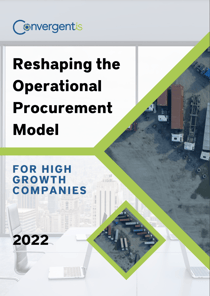Each purchasing transaction requires several steps, including completing a purchase requisition, purchase order, goods receipt and invoice. The caveat is that although conducting each of these steps is necessary for the purchasing function, some companies have found ways to do so significantly more efficiently. Through a combination of automation, process elimination, and the resulting concept of management by exception, many companies have found that they can reduce the amount of manual rework needed in favour of a more efficient process and a better bottom line.
When looking at each of these steps and the amount of time a user takes to complete each step, companies have determined one key metric to track their performance, the total cost per transaction.
But why is this indicator so valuable? And how can you calculate it within your operations? We explore the answer to both questions in the following post.
Calculating Your Cost Per Transaction
Across your supply chain, purchasing document processing costs impact your bottom line, so it makes sense that you consider what they are comprised of. In a simple breakdown, processing costs include both fixed and variable expenses. Some of these fixed costs include overhead, salaried employee wages, software licensing costs and other infrastructure. On the other hand, your team might have to factor in variable expenses, including email and office supplies, which may be needed to create, approve and fulfill a document.
However, although all these costs factor into the exact calculation, many teams simplify the calculation to consider the amount of time it takes to complete a transaction, multiplied by the average salary of their procurement employee, to arrive at the average cost per transaction.
In looking at a recent study from the Hackett Group, the discrepancies on a per document and per transaction basis may be quite large. For example, on an average cost per purchase order, the average company was estimated to be paying $14.48, while a leading company was as low as $3.33. In contrast, the average company paid $3.62 per receipt, while a top performer optimized their processes to $0.59. Rounding out the process is the invoice, which an average company was said to be paying $4.45 per document, in comparison to a top performer cost of $2.09. By investigating this study in further detail, companies can sum up the results of these studies to determine the total transaction cost value. A quick summation shows a total of $22.55 per transaction for an average company, whereas leading organizations have shown almost a four times more efficient process at $6.01.
Factors That Influence the Cost Per Transaction
A $16 price difference per document seems high, so what is the underlying cause for the difference in cost? You might have guessed it, efficiency.
Within your purchasing process, the more back and forth needed between the supplier and vendor at the purchase order stage, the more costly the transaction becomes. For example, with each amendment to the document, some businesses must still make the updates on a paper document that must later be scanned and sent to the vendor, and vice versa. However, email threads can be lost, or information may only be copied to some of the right team members, adding to the number of communications that go into the verification of a document. Moreover, the time it may take for a team member to source a product may be high when their options are more than a choice from one or two prevetted suppliers.
In analyzing a second example, consider the end step of a three-way match that must occur before a payment is made to a supplier. When documents all exist on email threads and invoices do not detail the same information as the initial purchase order, teams must also engage in some back-and-forth to ensure that the correct payment is being made. Since thousands of invoices may be done in a pay period, these manual verifications can be lengthy and, therefore, costly.
Lowering Your Cost Per Transaction
Many teams have found that the simplest way to lower their transaction cost is to start with a foundation on an end-to-end procurement solution. With all the information in one place, teams can quickly find the information to complete a purchasing document and track their progress against an initial purchase order within the same place. Building off a strong foundation, teams have also taken advantage of additional efficiencies such as automation, such as the details of one approved document being carried over to the next, and elimination, such as through Evaluated Receipt Settlement (ERS).
With ERS, an approved purchase order and goods/services receipt result in the automatic payment of a vendor. By eliminating the cost to create an invoice, total transaction cost can be further reduced from $6.01 to $3.92, an almost 6x difference from the $22 average businesses are paying today.
Learn what this might mean for your operations in our free guide, linked below.


